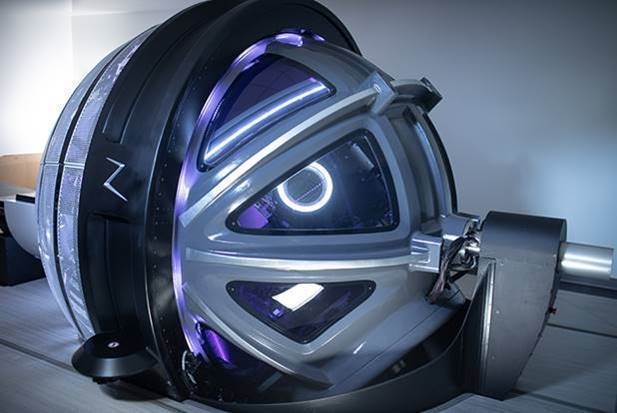 A Maryland woman has become the first patient on the East Coast of the United States to receive treatment with a new, non-surgical radiation therapy for brain tumors.
A Maryland woman has become the first patient on the East Coast of the United States to receive treatment with a new, non-surgical radiation therapy for brain tumors.
Zap-X® Gyroscopic Radiosurgery™ is now available at the MedStar Georgetown Cancer Institute (MGCI) at MedStar Southern Maryland Hospital Center.
“For many primary and metastatic brain tumors, non-invasive stereotactic radiosurgery (SRS) is proven to be as effective as surgery,” says Brian Collins, MD, medical director, Radiation Medicine at MedStar Georgetown University Hospital. “ZAP-X is an outpatient procedure with no surgical incision and little to no recovery time for patients.”
68-year-old Patricia June of Largo, Md. was diagnosed and treated for breast cancer in 2006. But unfortunately, her cancer recurred in her brain in 2020.
Neurosurgeon Amjad Anaizi, MD at MedStar Georgetown University Hospital removed June’s tumor in August. The next step in her treatment plan – kill any cancer cells left behind, using ZAP-X.
The new ZAP-X technology uses gyroscopic motion to direct radiosurgical beams from hundreds of angles to precisely pinpoint radiation to both cancerous tumors and benign conditions in the brain. Using this approach, the radiation spares healthy brain tissue.
“In this patient’s case, ZAP-X radiosurgery is a superior choice compared to traditional radiation,” says Andrew Satinsky, MD, clinical director of Radiation Oncology at the MedStar Georgetown Cancer Institute at MedStar Southern Maryland. “The ability to offer this technology to the people of southern Maryland, in combination with access to NCI-designated care and cancer clinical trials through our research partners at Georgetown Lombardi Comprehensive Cancer Center, provides access to the latest high-level treatments close to home. There’s never been anything like this in our region before.”
“This world-class therapy is redefining radiosurgery for the brain,” says Dr. Collins. “It’s increasing the accuracy and the intensity of the radiation we can provide, while making precision radiation treatment more readily available to patients. Our community is fortunate to have access to this next-generation treatment.”
Preparations for ZAP-X continued through the COVID-19 pandemic, although its spring opening had to be postponed. But dedicated teams of technologists from ZAP Surgical System who were prevented from flying, rented cars and drove cross country to the D.C. area from San Carlos, California and continued with the machine’s installation procedures.
“We are grateful to the teams from ZAP Surgical who helped us get this center open so we could begin to safely treat our patients with this amazing technology,” says Dr. Satinsky.



